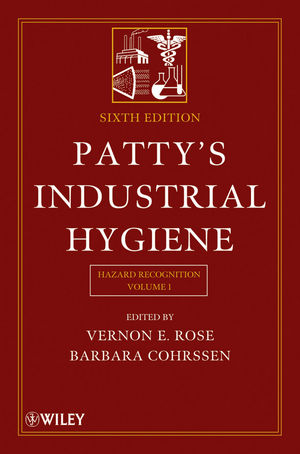
When it comes to decisions relating to PPE, there are three distinct but interrelated issues:
- Protocol decisions: an organization-wide workplace safety blueprint driven by corporate mission/vision and supported from the top down.
- Purchasing decisions: the place where the safety function and procurement function intersect to determine the PPE options that will be available to workers.
- Compliance decisions: made by individuals on a daily basis to determine how and if PPE will be used properly.
Protocol decisions: Hazard analysis and risk assessment
Creating a workplace that is free of illness and injury begins with one crucial decision: making safety a core value. Better yet, it should be an organization’s chief value.
One tool many companies count on to manage safety at a macro level is an EHS (Environment, Health & Safety) management system. Such a system outlines an organization’s safety policies, including how safety is structured and areas of responsibility.
Before making any decisions regarding the selection or use of personal protective equipment (PPE) in the workplace, safety professionals should conduct an analysis of the hazards in the work environment, coupled with an assessment of the realistic level of risk each hazard poses.
In fact, OSHA requires that employers conduct a hazard assessment of the workplace as a first step in selecting - and then providing - PPE for their employees. OSHA also mandates that employers provide written certification that the hazard assessment has taken place.
For example, a hazards analysis may identify the chemical acetone. But there is a great deal of difference in the PPE required for a worker exposed to a quart of acetone in a well-ventilated room compared with one who is exposed to a large vat of acetone in an enclosed space.
It’s important for the hazard analysis and risk assessment procedure to be adjusted to the practical demands of the work task. If not, one runs the risk of either over-protection or under-protection - both of which have serious consequences.
Over-protection may lead to immediate problems. For example, heat stress is a common problem in many industrial settings. The result may be users who do not properly comply with wearing protocols by modifying or incorrectly using the garment to avoid overheating. Under-protection may lead to chronic health problems down the road - after years of low-level exposure to certain hazardous substances.
The hazard analysis and risk assessment processes will yield information that can be used as key data points when matching PPE to the specific needs of each work environment.
Purchasing decisions: Whose job is it anyway?
While cost-cutting may seem like an appropriate response to current economic conditions, the pitfalls of this approach are numerous. In a tough economy it may be tempting to reduce spending by purchasing lower-cost safety equipment or protective apparel, but at what price? If the equipment or apparel doesn’t stand up to the job or isn’t right for the application, it will increase the risk to workers as well as offset any planned savings. These are some of the reasons why purchasers may find it useful to take advantage of a product selector tool - to identify a range of acceptable options for which the purchasing function can search out the best price.
Compliance decisions
In a 2010 survey of safety professionals attending the American Society of Safety Engineers annual conference, 98 percent of respondents said they had observed workers not wearing safety equipment when they should have been. Thirty percent said this had happened on numerous occasions.
Whether this is a result of economic conditions, a flawed approach to safety programs, younger workers who are more inclined to take greater risks, or some other reason, it’s essential that workers wear PPE when it is required. While the reasons for PPE noncompliance were varied, the biggest complaint was that it was “uncomfortable,” selected by 40 percent of respondents, followed by:
- Too hot
- Not available near the work task
- Poor fit
- Unattractive looking
These survey findings reflect the fact that safety decisions relating to PPE use are not just made at the management level. They are made by individual workers who make decisions on a daily basis vis-à-vis whether or not to follow PPE wearing protocols.
Compliance issues can be addressed by choosing high-quality PPE that performs properly, fits well and is also comfortable and stylish. In a tough economy it might be tempting to cut costs by purchasing less expensive protective apparel, but if the PPE rips or breaks, the resulting waste will negate any savings.
Yet the issue of comfort or “wearability” is often not adequately addressed when deciding on what PPE to purchase, resulting in compliance issues with safe operating procedures. For example, if coveralls don’t provide adequate breathability, if safety glasses fog up during use, if protective gloves don’t allow for hand dexterity, or if respirator straps are tight and painful to wear, there is a chance users will make the decision to avoid wearing the PPE, or that they will decide to modify the PPE in some way, thus compromising its protective features. Wearability also extends to apparel sizing and body geometry. A garment’s sleeves must not ride up to expose skin when the wearer reaches forward. From a compatibility standpoint, both decision-makers and users need to have a clear understanding of whether gloves should be taped to the outside of the coverall sleeve (if, for example, the use scenario calls for bending over and immersing one’s hands in a dangerous liquid) or to the inside of the coverall sleeve (if, for example, the use scenario calls for heavy chemical splash exposure, to prevent the splash from dripping down into the cuff of the glove).
Decision support tools
A variety of tools - including product selectors and cost calculators - are available online for 24/7 access to help safety professionals and equipment purchasers select the right PPE for each specific need:
- Objectives are established by users identifying the hazard type that best fits their protection needs, such as bloodborne pathogen protection, chemical resistance, pandemic preparation and other alternatives. This data is the result of the hazard analysis and risk assessment discussed earlier.
- Objectives are classified and placed in order of importance. Here, the user can enter information specific to the hazard, for example, the type of chemical that must be resisted by the garment, the state of the chemical (liquid or gas), and the possible routes of exposure (breathing, skin).
- Alternative actions are developed by the system automatically matching the appropriate garment or coverall to the hazard identified.
- Alternatives are evaluated against the objectives. In some cases, multiple options may be presented. At this point, it is up to the user to evaluate other criteria, including cost and garment comfort.
- The alternative that is able to achieve all the objectives is identified as the tentative decision. At this point, the user can complete the garment selection process.
A product selector tool helps in the decision-making process because it allows the decision-maker to analyze a finite set of alternatives that are described in terms of relevant evaluative criteria. It can also help make up for a lack of extensive experience on the part of the decision-maker.

